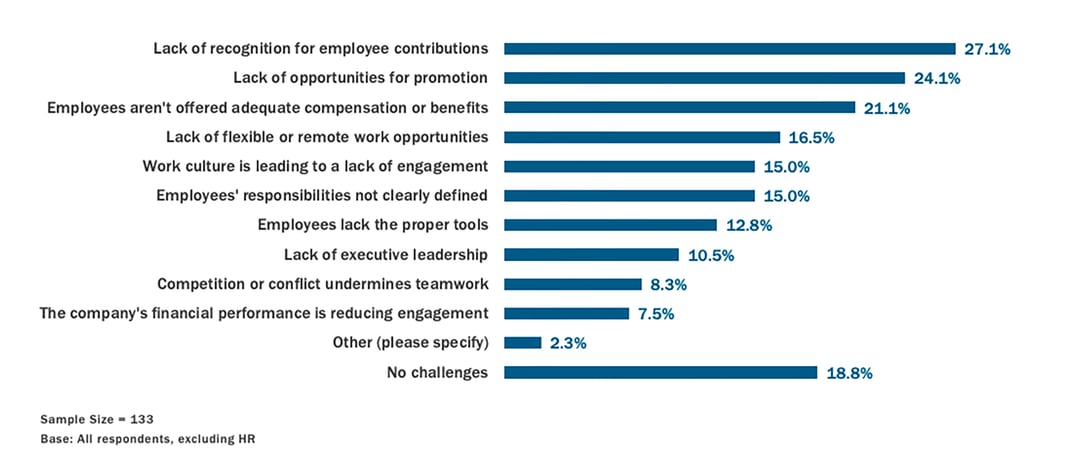
Three Things HR Must Get Right in its COVID-19 Response
In the initial aftermath and ongoing challenges of the novel coronavirus outbreak, HR practitioners must craft and follow a compelling response plan that helps keep employees engaged and supported, assists LOB managers in efficiently using their workforce, and provides a partner to IT in an effort to collaborate on productivity initiatives that stem from a large-scale movement to remote work. With these pillars in place, HR can help its organization weather the initial friction brought by COVID-19, while helping prepare it for a new work future as well.
#1 Keep employees engaged
Employee engagement emerged as a key metric for the employee experience a long time before the outbreak of the novel coronavirus. Essentially, employee engagement refers to measuring and analyzing employee sentiment and level of engagement with their work, their team, their manager, and the company itself. High levels of engagement can translate into better productivity and retention.
Understandably, issues like the COVID-19 crisis can have a dramatic impact on employee engagement. It is HR's responsibility to understand that impact, mitigate its negative aspects, and leverage its positive ones. Let's look at how employees feel that the crisis has affected their engagement. According to our Voice of the Enterprise: Workforce Productivity & Collaboration, Employee Lifecycle and HR survey from early 2020, roughly 55% of respondents said they were somewhat or very disengaged at work as an impact of the coronavirus outbreak. However, about 30% said they were somewhat more engaged or much more engaged at work in the wake of the outbreak.
This is interesting because it shows that the impact can be positive, meaning that there are aspects of the new work paradigm that can be leveraged to improve engagement for some people. So, one of the first practical steps that HR should take in light of the coronavirus is to measure engagement using tools like pulse surveys offered by companies like Culture Amp, Peakon, tinyPulse, Glint, or Qualtrics. Without a formal tool in place, or if you need to measure sentiment quickly, a standard survey tool like Google Forms or SurveyMonkey could also be used.
If possible, try to go beyond yes or no questions to determine the main factors driving either a positive or negative impact on your employee experience. Bear in mind that these factors might not improve engagement for all employees. When we broke down the data on COVID-19's impact on employee engagement based on different demographic segments, we found that in general, managers and administrators were more engaged following the outbreak, while general staff and non-managers had higher levels of disengagement. It was also telling that companies with poor recognition strategies and low opportunities for promotion also had a high level of disengagement among their employees during the outbreak, according to our data. To get more contextual factors for your organization, another option is to leverage crowd-sourced answers through a voting tool like Waggl to determine the lowest common denominator in the factors and use that to triage your responses.
If you need a good baseline for how to improve your overall engagement, let's take a look at that same 451 Research Voice of the Enterprise: Workforce Productivity & Collaboration, Employee Lifecycle, and HR survey from 2020.
Figure 1: Workforce Productivity & Collaboration, Employee Lifecycle and HR survey from 2020
Source: 451 Research, Voice of the Enterprise Workforce Productivity & Collaboration: Employee Lifecycle and HR 2020
#2 Navigate workforce and talent management
Another core pillar of HR's response to the coronavirus is how HR handles – and helps others handle – massive changes to workforce and talent management. Before the virus outbreak, talent management moved at breakneck speed, with companies around the world racing to hire the best talent they could as quickly as they could. Now, however, things are changing. When we asked respondents of our March 2020 Voice of the Enterprise: Digital Pulse, Coronavirus Flash Survey what strategic plans they had delayed, reduced, or stopped in light of the crisis, hiring staff was the top response.
With such a large portion of businesses planning to freeze hiring, HR will have to work with LOB managers to plan around internal mobility as much as possible to make sure they have the right skills and roles in place to continue moving their projects forward. Investing in skills management can enable HR to help LOB leaders make their teams more dynamic and equip individual employees to fill in for others in different teams if they have to be out of work for an extended period. It's also a long-term investment that could pay off with an improvement to employee engagement and a more flexible workforce. Skills management, however, is a broad enough topic, so let's look at ways we can optimize our investment in it.
#3 Support a productive employee experience
It's not a shock that many companies are currently experiencing, or are worried about experiencing, lost productivity due to the large-scale shift to work-from-home (WFH) strategies as a response to the COVID-19 outbreak. According to 451 Research's Coronavirus Flash Survey, nearly 40% of companies are already experiencing a reduction in employee productivity and roughly 22% expect to experience it within three months.
To combat this productivity loss, new technologies and tools are being put into place to improve communication, collaboration, work management, and more. And while these tools are a great first step, it's important to remember that quick fixes aren't scalable and many of the tools being put into place could eventually become the new normal. So, these need to be put in place with the employee experience in mind. That's where HR comes in.
Get the Full Report
Dive into the entire list of things that HR teams must get right in their response to COVID-19 (backed by the latest data from 451 Research) by downloading the full report.
/Ripcord%20Logo%20-%20Color%2011.png?width=2000&height=620&name=Ripcord%20Logo%20-%20Color%2011.png)





